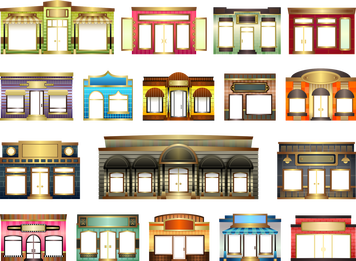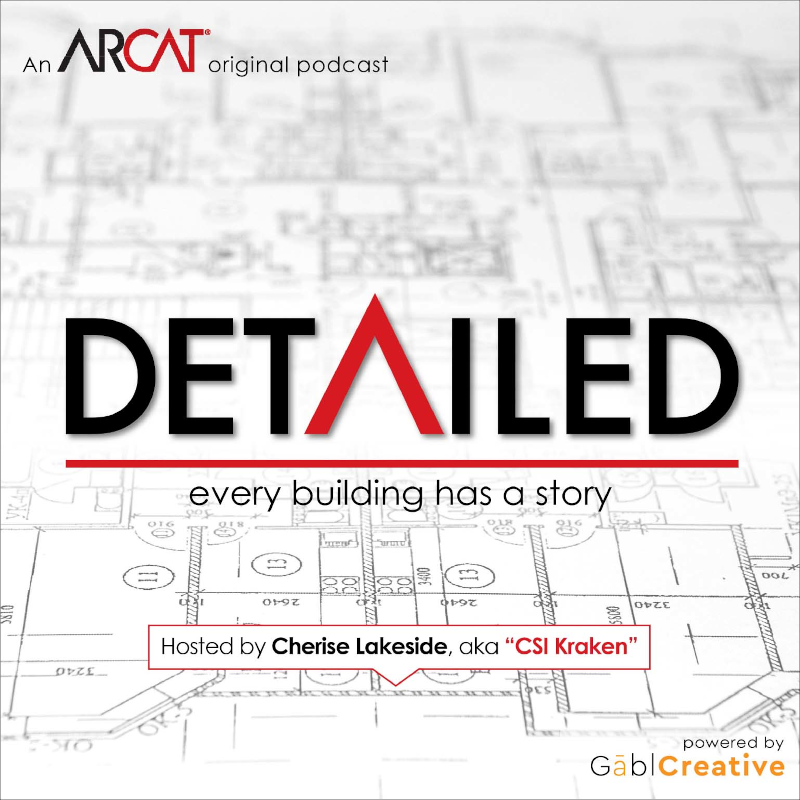|
Contributed by Justin Havre The blockchain is a type of decentralized public ledger that makes it easier to organize, verify, and protect information. While it's mainly been associated with cryptocurrencies like Bitcoin, the technology has much more potential than that. It's been theoretically applied to almost every sector of the economy and is slowly transitioning from the possible to the practical.
Blockchain may be able to tighten up construction deadlines, prevent fraud, and cut out the middlemen all while encouraging new ideas and partnerships. What the Blockchain Does The blockchain is a revolutionary way to input information and secure it from anyone who shouldn't have access to it. Not only can it keep financial transactions safe from prying eyes, but it can also streamline construction projects with multiple moving parts. Between investors, developers, and construction workers, it's easy for information to slip through the cracks. But the blockchain isn't like any other project management tool anyone's ever used before. Using Smart Contracts A smart contract is a series of if/then statements that are set up according to the rules of each project. The blockchain is dominated by the logistics of the programmer, so it can be adapted to small and large projects alike. Construction companies can use these smart contracts to essentially control every aspect of the project. So, if a painter needs to wait for an inspector to first check the drywall before painting, there will be an unhackable log where they can plainly see whether or not an inspector has held up their end of the bargain. Advancing Technology The blockchain makes it easier than ever for construction crews to keep up with new technology on the scene. For example, Building Information Modeling (BIM) tools may have helped to improve precision during construction, but it's also led to a lot of confusion on the actual job site. When changes can be made faster than ever, workers need a single source to receive updates in real-time. The blockchain can update everyone that the developers want a new color of paint in the bathroom or slightly different dimensions in the master bathroom. Finding the Right People There is a lot of segregation in construction, which leads to the isolation of ideas and talent. This separation is (in part) due to the fact that it's difficult to both find and coordinate with the right partners. Much like with picking the right real estate agent to work with, if there isn't an easy way to assess a company's reputation, it can lead to undue competition. The blockchain can both facilitate coordination and inspire partnerships between companies with different specialties. This type of cross-pollination of skills can lead to some truly innovative results in the industry.
2 Comments
Contributed by Elias Saltz As a consulting specifier, my clients come for my expertise. To bolster my knowledge, I frequently find myself in conversations with product reps, talking about the nitty-gritty technical aspects of their products. These conversations delve into a far deeper level of detail than I would previously get when I was a ‘normal’ design architect and project manager. Over the course of those conversations, I am occasionally surprised that things I thought I knew a lot about were based on misconceptions. In fact, even things that I considered “common knowledge” have been shown to be wrong, or at least over-simplifications. Armed with accurate information, I can pass correct technical advice on to my clients, hopefully dispelling those misconceptions one person at a time, one project at a time.
Misconceptions can be found across the spectrum, in every product category and in every MasterFormat number. I thought it would be fun and enlightening to ask my go-to reps in a wide variety of product categories to tell me the biggest and most common misconceptions they hear as they work with designers and architects, and present their responses here. In each post, I’ll relate my discussion with reps in one category or one MasterFormat header. The reps I chose to approach for this post, Kurt Wenzel from YKK AP and John Stelter from EFCO Corporation, are both active and involved CSI members that I’ve come to know well over my career. I consider them my trusted advisors when it comes to questions about their companies’ lines of fenestration products. I’m not promoting their products over their competitors’ - it’s far more about the individual reps than the companies that they work for. 08 43 13 - Aluminum-Framed Storefronts Introduction to Storefronts: Webster defines storefront as “The front side of store or store building facing a street.” The use of storefront products dates all the way back to the 1930’s, and the systems of today have changed very little from the original design. The design intent of the storefront sash and glass originally was to allow for shopkeepers to display their wares to pedestrians who would pass by their stores. They aimed to entice them to stop and look with the hopes of attracting them inside. Aluminum-framed storefronts are basically extrusions of aluminum that are fabricated and assembled to allow for glass (or other infills) to be installed into the system, providing a see-through weather barrier between the inside and outside of the building. The extrusions are normally 1-3/4 to 2 inches wide by 4 to 4½ inches deep; systems 6 inches deep are available from some manufacturers. Systems intended for use on buildings’ exteriors usually are fabricated with a thermal break lined up with the center of glass. The thermal break reduces heat energy loss through the system, preserving energy and minimizing condensation. That thermal break is omitted when the storefront is located on the interior, such as in a vestibule. With storefront systems, the entire extrusion is structural, there are no non-structural pressure caps or decorative covers like there are in curtain wall systems. Multiple configurations are available, and all are conceptually equivalent, other than the plane of the glass. Configurations include structural glazed, front, center, and rear glazed systems. CSI’s Specifier Practice Group recently held a webinar session discussing how storefronts, windows, curtain walls and window walls are made and how they’re distinguished from one another in performance and in their use. The video of that webinar is available here. Contributed by Tom J. Moverman, Esq A long time ago modular construction had a limited understanding that brought it down to parked trailers and temporary metal buildings that did not retain heat. Fast forward to now, increased efficiency in the modular business has shifted the focus from stick building methods to new building processes.
What Is Modular Building Or Construction? Put simply, modular construction or building is the method of having all the components of a structure pre-built in a secure and dry factory and finally assembled at the respective site. Most people who have seen this type of building have witnessed it in the construction of a home. An increase in modular construction saw nearly three percent of all commercial construction done using modular methods. Using modular construction is growing in popularity in the construction industry and with very good reasons. One of those reasons for this popularity is that modular construction saves time and money. For example, construction slows down in the colder parts of the country, but using modular building methods means this is not normally the case. Construction is done inside a climate-controlled factory where workers do not have to battle the elements and construction companies don't have to be concerned about losing time and money due to inclement weather. It's estimated that a structure built through modular methods can be constructed 25 to 50 percent quicker than standard construction methods. This further adds to its popularity with companies looking to save money on building costs. Questions That Come With This Type Of Construction One of the most pertinent questions that come up when talk about modular construction happens, is how this type of construction will affect American workers' jobs. The most viable answer to this question is that foreign companies can try to create modular building segments to be used in America but they are not going to have the best insight into building exactly for American needs. This lessens the potential threat of job loss that this construction is perceived to bring. Furthermore, shipping costs associated with getting big modular segments to the United States can prohibit foreign companies from building for American projects. As already stated above, foreign manufacturers might use materials and methods that do not meet American building costs. It is likely that foreign modular construction companies are going to be reluctant to change their methods in order to meet American specifications. What all this means is that there is a less chance American jobs will be taken out of the country and into foreign hands. A Degree Of Accuracy Is Required Another element of modular construction that needs to be taken into consideration is how precise the site preparation needs to be in order to for a structure to be built correctly. With regular building projects, imperfections in the foundation can be corrected by making adjustments on site. However, when it comes to modular buildings, the foundation has to be accurately level to within one-half of an inch otherwise the entire structure will need to be rebuilt. Many American construction companies have adjusted to this unique facet of modular construction, however the thought that one wrong move could ruin the whole project can certainly elicit a lot of frustration sometimes. Will All Buildings End Up Looking Similar? Modular structures used to look alike a lot, regardless of their structure. Thankfully, technological advances have helped modular construction companies find ways to offer a lot of variety to their clients. Some of those advances now allow architects to design modular structures with curves and other various shapes that were not possible before. A desire for modular construction companies to acquire more of the commercial market is the reason behind this new innovation. Modular manufacturers turned to commercial construction after the residential housing market fell. Many manufacturers have found success in this market. However, despite the changes and successes, modular construction still faces some limitations based on the look and functionality of a structure. That still does not mean modular construction is not something to consider for your projects. It is also worth noting that modular does not have to be done for the entire structure; heating, cooling or plumbing systems can be built in advance and shipped after completion. Whichever way modular construction is used, it is worth considering for its time and money saving purposes. Author Bio: Tom Moverman established the Lipsig Brooklyn Law Firm with Harry Lipsig and his partners in 1989; The firm’s focus is in products liability, personal injury, construction accidents, car accidents and medical malpractice. Contributed by Sheldon Wolfe Many products offer not only a selection of standard finishes at a standard price, but offer more options at additional cost. Some will offer those options in price groups, such as Standard, Group 1, and Group 2, where each group is more expensive than the last. Finally, some manufacturers offer to match any color.
Unfortunately, the requirements for getting a custom color often are vague, and a minimum quantity may be required or other limitations may apply. The result? I may tell a project architect that a custom color will cost more, but because I often don’t know how much, the response usually is, “It doesn’t matter; we want custom.” The problem, of course, is that bidders, who are trying to get the job, are forced to either comply with the specifications and risk losing the job, or bid a standard color in hopes of getting away with it - which too often is the case. I recall a project that required all exterior metal finishes and all concrete coatings to be bid as custom, to match a specific color. Had that color been something unusual or exotic, that might have made sense, but the chosen color was essentially off-white. Trying to get all those colors to match was a nice theory, but in practice, there was as much difference in appearance between adjacent panels, one in shade and the other in full sun, as there was between the colors submitted. And then there are the effects of dirt and UV exposure… Colors change, and some change more than others, so the carefully selected finishes may no longer match after only a short time. For that project, the owner probably paid the price of custom color and got a standard color for some of the finishes. A couple of years ago we had two projects going, which just happened to have the same custom color for the metal roofing. An astute supplier was able to combine materials for both in a single order. Individually, neither project had enough material to meet the minimum for a custom color, but together they almost did, so the supplier was able to cover most of the added cost. It's always possible for the architect to insist on a custom color regardless of quantity, but that can be more than a bit embarrassing when the contractor tells the owner that the cost can be reduced by a large amount simply by changing to a slightly different color. Some joint sealants can be produced in virtually any color, and architects are accustomed to always asking for custom colors. It’s usually not a problem for a large project, but the architect should know that the contractor might have to buy fifty gallons of sealant for a joint that's only ten feet long. Specifying acoustic properties presents similar challenges. Many assemblies will meet a given STC or NRC rating: brick, CMU, CMU with filled cores, multiple layers of gypboard, high density gypboard and similar products, resilient channels, clips, resilient adhesives for multi-layer assemblies, etc. What do they really cost? How do they really perform? Without knowing the relative costs and properties, detailing a particular assembly may result in performance that is lower than expected, or it may cost more than another assembly that would perform just as well. And what about dimensions? It's easy to draw a large panel in elevation, but can it be produced? Do the length or width force the fabricator to alter the orientation of panels, which can affect appearance of some finishes? Do the dimensions require greater thickness of material, thereby increasing the cost beyond what the designer expected? These are all very real issues that big-D Designers don't think about, yet it's essential to evaluate such information early in design - before the client has been sold on the design. Contributed by Jerry Fossey How do I specify Metal Composite Material (MCM) manufacturers vs. fabricators?
This is probably one of the most confused topics in the ACM/MCM industry, so I hope that this short post will help clarify the difference between the Manufacturer and Fabricator of Metal Composite Material (also known as Aluminum Composite Material or ACM). MCM consists of two skins of metal sandwiching a core material, which provides greater rigidity and superior flatness than sheet metal or plate. The MCM Manufacturer is the one that makes sheets of MCM, in a process where the skins and core are fused together in a continuous coil process. There are also some manufacturers that press skins to a core one sheet at a time, however this is generally known to be a lower quality bond, which is important when you consider the harsh conditions an exterior building envelope is required to withstand. The MCM Fabricator cuts, routs, folds and otherwise processes the MCM to fabricate panels to mount on the building. These fabricators can either have their own tested installation system using aluminum extrusions, or they can use a third party’s installation system. So which one should I specify? The MCM Manufacturer or the Fabricator? The answer is BOTH! There are many testing requirements, some of which apply to the Manufacturer and some to the Fabricator. Anything related to the MCM itself, such as fire rating and surface finish belong to the Manufacturer. Tests that require panel fabrication generally apply to the Fabricator, such as wind loads and water penetration. It is important then to clearly differentiate between the Manufacturer and the Fabricator in your specifications. I hope this helps build a greater understanding in the Composite Metal Wall Panel industry! |
AboutLet's Fix Construction is an avenue to offer creative solutions, separate myths from facts and erase misconceptions about the architecture, engineering and construction (AEC) industry. Check out Cherise's latest podcast
Get blog post notifications hereArchives
March 2022
Categories
All
|






 RSS Feed
RSS Feed
